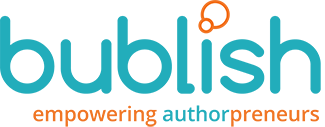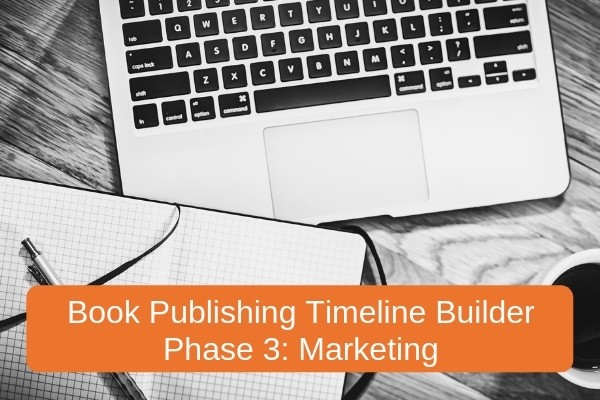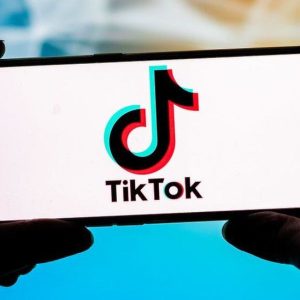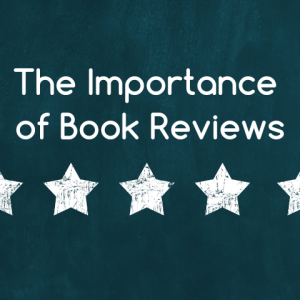In this fourth installment of Bublish’s “Book Publishing Timeline Builder” Series, we’re diving into the Marketing Phase of the Publishing Process.
In the most simplistic terms, marketing involves advertising, brand building, content creation and social media. There is definitely a time when marketing takes center stage in your publishing schedule, but marketing actually comes into play in every phase of the publishing process. During the development phase, marketing discussions take place around the manuscript’s market fit and positioning. When your book moves into production, cover design requires a marketer’s input. Book reviews are an important element in marketing copy, so gathering reviews early is vital, and must be incorporated into your publishing timeline. Even when you’re choosing book formats, pricing and distribution channels, marketing decisions come into play. In the first installment of this series, we talked about how dependencies must inform your publishing timeline. Marketing will create the most dependencies in your timeline, so as you’re working on your schedule, make sure to incorporate important marketing tasks.
Set Measurable Goals
What constitutes successful marketing? The answer depends on your goals. Very early in your publishing journey, you’ll want to establish specific goals for your book. Too many authors skip this step, and that’s a mistake. If you’re serious about achieving success as a self-publisher, goals are key. They will help you establish milestones for your marketing efforts. Successful marketing campaigns are always measured against quantifiable goals. If you’re a new author with no readership, your success might be measured by the number of book units downloaded (rather than royalties). If you’re promoting a series, your success might be measured by the “buy through” rate. If your book is a lead magnet for your business, the number of emails you acquire might be the best way to measure your marketing success. These are just a few examples. The marketing plan you create should help you achieve your goals as an author, so establish your goals as early as possible.
Budget for Success
In the independent publishing world, it’s tempting to rely solely on “free” tactics to drive book sales. That’s fine for some aspects of marketing, however it may not be enough to help you reach your goals. That’s why it is important to establish a budget early in your publishing journey. There is nothing more frustrating than spending all of your budget prior to publication, only to discover you don’t have enough money reserved to market your work just as it’s gaining traction in the marketplace. This is, unfortunately, a very common problem for indie authors.
How can you set a budget before you know specifically what types of marketing you’ll need? Set a projected number of books that you would like to sell per month as well as your retail price. This will give you the information you need to set your projected gross revenue per month. Plan to spend about 8-10% of this gross revenue on marketing. For example, if you’re selling 1,000 books a month at $4.99 a piece, your gross revenue is $4,990—10% of that is $499. Depending on where you are in your publishing career, you might need to budget for additional investments like website development or professional marketing advice about to construct a professional marketing plan, how to develop your brand message, or how to maximize “free” marketing opportunities. Your initial budget might change as you put together your go-to-market plan, but at least you’ll have funds earmarked for marketing.
Now that you have a marketing budget to get started, you can create a simple model showing how many target readers you need to reach in order to get a percentage of those readers to purchase your book. In “marketing speak” this is called a funnel. If, for example, you want to sell 2,000 eBooks during a three-month pre-order campaign, how many people do you need to reach? Of the people you reach, how many can you reasonably expect to buy your book (that’s your conversion rate). If you expect 3% of the readers you reach to buy your book, that means you need to reach about 68,000 readers. Your formula would look like this: 68,000 (your reach) X .03 (3% conversion rate) = 2,040 eBooks sold. There are many variables that can impact conversion rates, so research standard rates in each marketing channel before getting started. Also, the more targeted you can be in your marketing and advertising, the higher your conversion rate is likely to be.
Gather Your Assets
Every marketing campaign requires assets. These are the images, content
and documents that support your marketing efforts. Here are some examples:
- Your book’s cover image files
- Image files of your book
- Author bio and headshot
- Press kit
- Press releases
- Book synopsis and blurbs
- Ad copy and images
- Book samples
Certain marketing activities require specific assets. As you’re planning out the marketing milestones in your publishing timeline, schedule asset planning and production. You never want to miss a marketing opportunity because you don’t have the necessary assets ready in time.
Brand Early and Often
Branding represents the core of your marketing strategy—the center of the wheel from which all the tactical “spokes” extend. We’ve talked about the value of positioning during the development phase of the publishing process. Positioning will guide many key decisions around building and marketing your author brand, so make time early in the publishing cycle for this foundational work. We’re experts in author branding, book positioning and marketing, so don’t hesitate to reach out to us, if you need help. Here are some branding-building tips:
- Study comparable authors to understand how they show readers their brand through marketing copy on their sites, social channels
and retailer pages. - Articulate your brand message—your promise to readers. This is the heart of your brand.
- Write down your book’s differentiators. Why would a reader choose your book rather than other books in your category?
- Incorporate your findings into an “elevator pitch”—a short description of your book that explains where your book fits in the market and how it stands out. You’ll share this pitch with publicists, in marketing copy, and with potential reviewers.
- Develop your book’s description, which will be used for back cover copy, synopsis (long and short), product page description. This type of writing is known as copywriting, and it’s a very specific skillset. We recommend hiring a professional who knows how to write a description that incorporates keywords and draws in readers.
- Remember that metadata (the fields you fill out when uploading your book to retailers and other book sites—title, subtitle, ISBN, synopsis, categories, keywords, etc.) is also part of your brand messaging. It informs databases where booksellers, reviewers, librarians, and others go to find books, so make sure this information is complete, accurate and consistent. Metadata also informs recommendation engines, which can make your book discoverable to book consumers.
Brand-building is a big and important topic here at Bublish, because we know its power to break through the noise in today’s crowded book marketplace. Not only have we created a powerful, brand-building tool for you with book bubbles, but we cover this topic frequently in our blogs and webinars. We invite you to explore past posts for more on this topic, and watch your inbox for invites to our free, monthly webinars for authors. If you’re not on our mailing list, sign up for alerts and updates about forthcoming events.
Get Ready to (Pre)Launch
Now that you’ve front-loaded your marketing plans with quantifiable goals, a realistic budget, and a working brand identity, you can start planning for your book’s launch. Though execution starts about three to six months before your “on sale” date, long-term planning starts early, while your book is still in the editorial and production phases.
When it comes to book launches, some marketing drivers reach across all genres. Schedule the necessary steps to promote your book’s launch through paid advertising and promoted social media, among other things. Other marketing tactics should be considered based on the type of book you’ve written. These may require a longer lead time. Here are a few examples:
- For literary works, reviews are key to reach literary readers. We’re not big fans of paid reviews, but strongly encourage authors to pursue free reviews at respected journals and publications where target book buyers can be reached. Some journals will only consider a book for review if an Advanced Reader Copy (ARC) is received four to six months in advance of publication. From a timeline perspective, this means the manuscript has been through copyediting, an initial proofread, interior layout and cover design…and you’ve reviewed a print proof.
- Children’s books, which are still heavily dependent on the bookstore and library markets, require a more traditional launch schedule. Along with reviews from the right journals, consider attending or sending your book to key industry shows, many of which Bublish attends. Having a presence at the right shows can give your book direct exposure to library and bookstore buyers, but this requires advanced planning and a launch schedule that coordinates with the shows you select.
- Genre fiction—romance, mystery and thrillers, for example—are a different story. Starting a genre series with a free or discounted book can be a very effective way to build a readership. Participating in “free” and discounted eBook programs and promotions can provide a good foothold in these communities, so research your options and schedule early. Solidify your specific launch tactics at least 6 weeks prior to publication. Since “buy through” is key in a series, consider a marketing plan that incorporates the release of several books in the series in timely succession.
- If you’re publishing a business or nonfiction book, you might need to coordinate media placement efforts with a publicist or PR agency. This, too, requires advanced planning and a longer publishing timeline.
- If your book has a broader social message, you might find that partner marketing or cross-promotions will get you in the door to the community you want to help, or in front of the like-minded readers who are eager to make a difference.
Countdown to Launch
The nice thing about front-loading your marketing plans is that when it’s finally time to launch, you have the bandwidth to take advantage of any opportunities that emerge as well as handle last-minute details and surprises. As you head into the final push a month before launch, we advise you to step back and consider some excellent advice Peter Hildick-Smith of the Codex-Group gave in his 2014 Digital Book World presentation. His “Three Pillars of Initial New Book Sales” make for a perfect final checklist:
- Discovery—Do the readers know your book exists?
- Conversion—Is your book interesting enough for the reader to buy?
- Availability—Is your book available to buy whenever and however the reader wants it?
It seems like a simple equation: discovery + conversion + availability = new book sales. But, as is often the case, the devil is in the details—and that’s what you need to make sure you’ve nailed down before launch.
- Discovery—If you understand your audience and have positioned your book correctly, you have a strong foundation for discovery, but your distribution channels are also important. Can your book be found on the virtual and physical shelves where your target readers browse for their next great read? If not, you’ve got some work to do.
- Conversion—This, too, comes back to positioning and packaging your book to capture the reader’s attention. Conversions are also influenced by cover design, marketing copy and pricing. If you’ve run a pre-order campaign, you might have enough data to figure out what’s working and what’s not—and adjust before launch.
- Availability—Can readers purchase your book from the retailer they prefer (online or real world) in the format they like (eBook, print, audio)? For example, if most of your readers buy books like yours in physical bookstores, and your book is not available in wholesale channels at the right discount, then you’ve got some work to do. Make sure your book is available where readers in your genre go to buy books.
When you’re managing all the final details of your book launch, it’s easy to get caught in the weeds…but don’t lose sight of the basics. All the marketing plans and tactics in the world won’t bring success unless you’ve got these three concepts nailed down. Since discovery and availability are closely tied to book distribution, we're going to dive into this topic in our next installment of Bublish’s “Book Publishing Timeline Builder” Series. Stay tuned!





